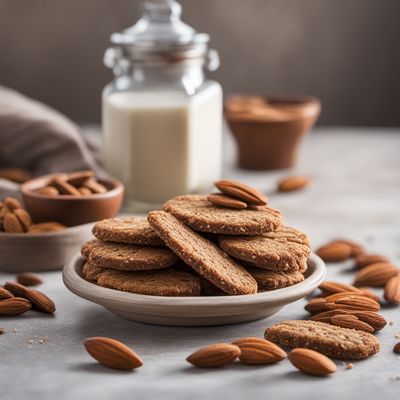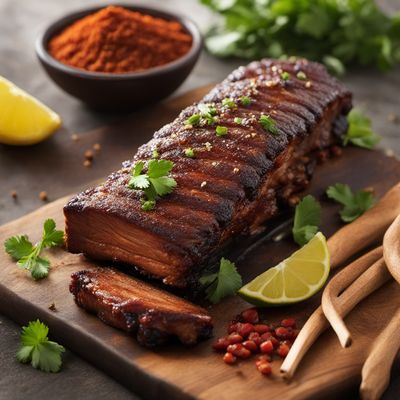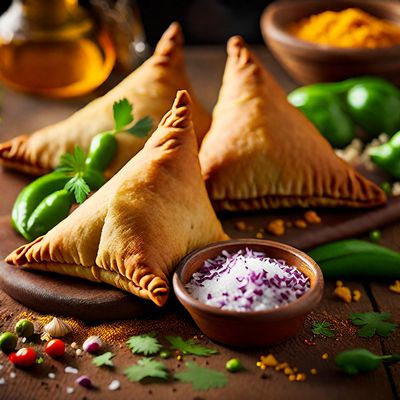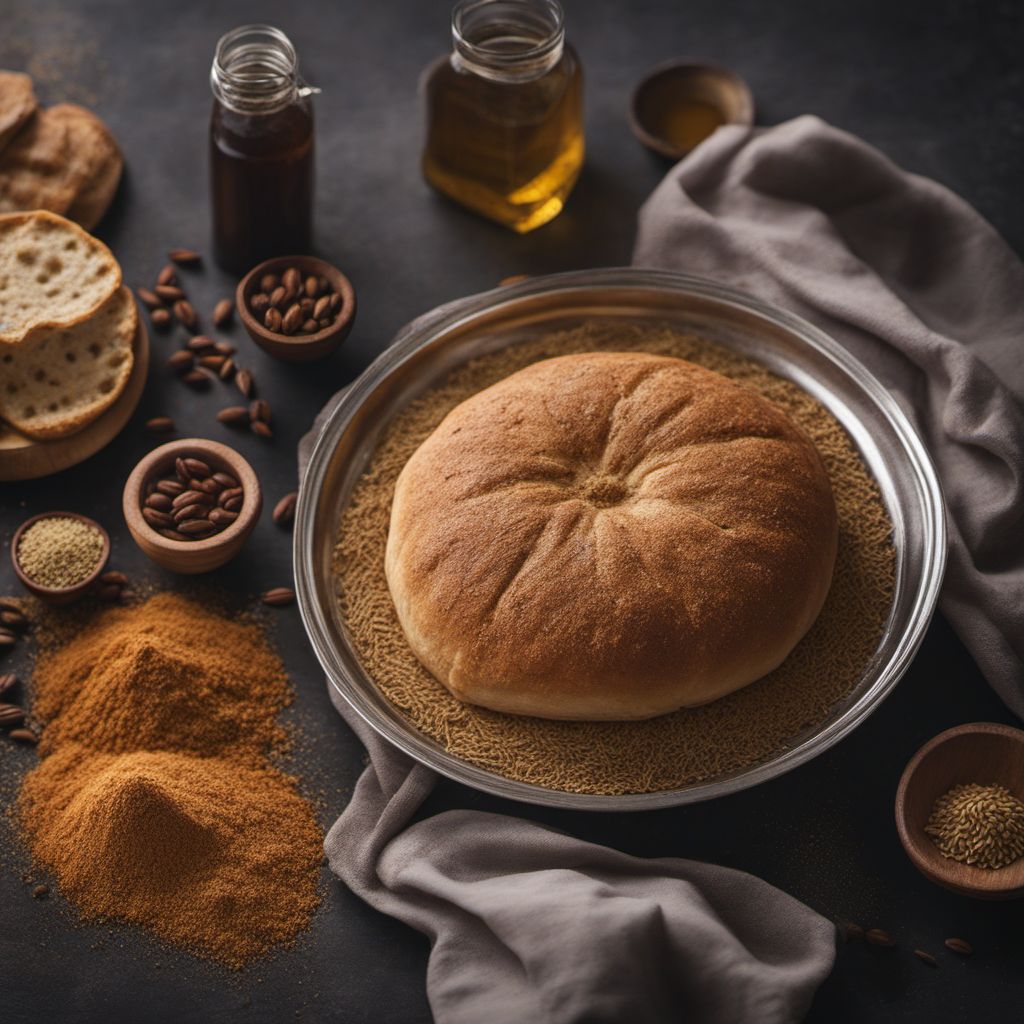
Recipe
Khobz el dar - Moroccan Homemade Bread
Sahara's Scented Bread: A Taste of Moroccan Tradition
4.6 out of 5
Indulge in the rich flavors of Moroccan cuisine with Khobz el dar, a traditional homemade bread. This staple dish holds a special place in Moroccan households, where it is lovingly prepared and enjoyed by families and friends.
Metadata
Preparation time
20 minutes
Cooking time
25 minutes
Total time
2 hours 15 minutes
Yields
4 servings
Preparation difficulty
Medium
Suitable for
Vegetarian, Vegan (if honey is substituted with sugar), Dairy-free, Nut-free, Soy-free
Allergens
Wheat
Not suitable for
Gluten-free, Paleo, Keto, Low-carb, High-protein
Ingredients
-
500g (4 cups) all-purpose flour 500g (4 cups) all-purpose flour
-
10g (2 tsp) active dry yeast 10g (2 tsp) active dry yeast
-
10g (2 tsp) sugar 10g (2 tsp) sugar
-
10g (2 tsp) salt 10g (2 tsp) salt
-
1 tsp ground cumin 1 tsp ground cumin
-
1 tsp anise seeds 1 tsp anise seeds
-
350ml (1 ½ cups) warm water 350ml (1 ½ cups) warm water
-
Olive oil, for greasing Olive oil, for greasing
Nutrition
- Calories (kcal / KJ): 180 kcal / 753 KJ
- Fat (total, saturated): 0.5g, 0.1g
- Carbohydrates (total, sugars): 38g, 1g
- Protein: 6g
- Fiber: 2g
- Salt: 1.2g
Preparation
-
1.In a small bowl, dissolve the sugar in warm water. Sprinkle the yeast over the water and let it sit for 5 minutes until foamy.
-
2.In a large mixing bowl, combine the flour, salt, ground cumin, and anise seeds. Mix well.
-
3.Make a well in the center of the flour mixture and pour in the yeast mixture. Gradually incorporate the flour into the liquid, mixing until a dough forms.
-
4.Transfer the dough to a floured surface and knead for about 10 minutes until smooth and elastic.
-
5.Place the dough in a greased bowl, cover with a clean kitchen towel, and let it rise in a warm place for 1-2 hours or until doubled in size.
-
6.Preheat the oven to 220°C (425°F). Place a baking stone or an inverted baking sheet in the oven to preheat.
-
7.Punch down the dough and divide it into two equal portions. Shape each portion into a round loaf.
-
8.Place the loaves on a parchment-lined baking sheet and let them rise for another 30 minutes.
-
9.Dust the loaves with flour and make diagonal slashes on the surface using a sharp knife.
-
10.Transfer the loaves onto the preheated baking stone or baking sheet. Bake for 20-25 minutes until golden brown and crusty.
-
11.Remove from the oven and let the bread cool on a wire rack before slicing.
Treat your ingredients with care...
- Flour — Use all-purpose flour for the best results. Bread flour can be used as a substitute, but it will yield a slightly denser texture.
- Anise seeds — Toasting the anise seeds before adding them to the dough will enhance their flavor. Simply heat them in a dry skillet over medium heat for a few minutes until fragrant.
- Baking stone — If you don't have a baking stone, you can use an inverted baking sheet as a substitute. Preheating it in the oven will help achieve a crispy crust.
Tips & Tricks
- For a more pronounced flavor, you can add a pinch of ground cinnamon or coriander to the dough.
- To achieve a chewier texture, you can replace a portion of the all-purpose flour with whole wheat flour.
- If you prefer a softer crust, brush the loaves with olive oil before baking.
- To ensure a good rise, place the dough in a warm spot, such as near a window or on top of a preheating oven.
- Leftover bread can be sliced and frozen for later use. Simply thaw and reheat in the oven for a few minutes before serving.
Serving advice
Serve Khobz el dar warm or at room temperature. It is perfect for tearing and dipping into Moroccan stews, soups, or tagines. You can also use it to make delicious sandwiches filled with grilled vegetables, falafel, or Moroccan-style meats.
Presentation advice
Present the Khobz el dar on a rustic wooden board or a traditional Moroccan bread basket. Sprinkle some extra cumin or anise seeds on top for an added visual appeal. Serve alongside a small dish of olive oil and za'atar for dipping.
More recipes...
For Khobz el dar
More Moroccan cuisine dishes » Browse all

Boulfaf
Boulfaf is a traditional Moroccan dish made with lamb liver and spices. It is a popular dish in Morocco and is often served at special occasions...
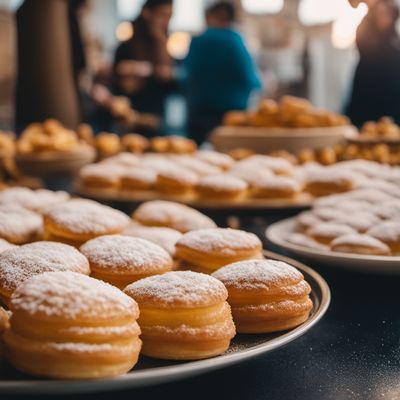
Sfinz
Sfinz is a traditional Italian pastry that is often enjoyed during the holiday season. This sweet treat is made with a combination of flour,...
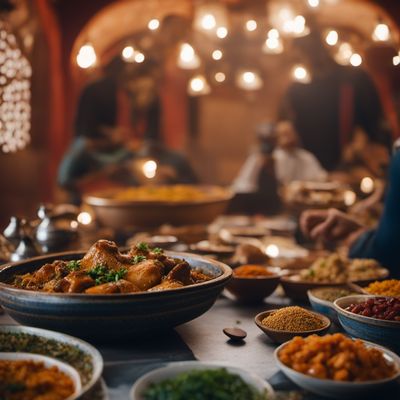
Chicken Tajine
Chicken Tajine is a traditional Moroccan dish made with chicken, vegetables, and a variety of spices.

